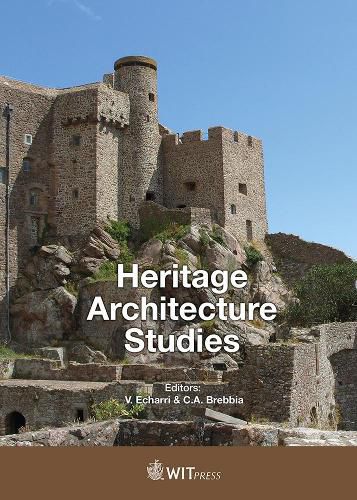Readings Newsletter
Become a Readings Member to make your shopping experience even easier.
Sign in or sign up for free!
You’re not far away from qualifying for FREE standard shipping within Australia
You’ve qualified for FREE standard shipping within Australia
The cart is loading…






This title is printed to order. This book may have been self-published. If so, we cannot guarantee the quality of the content. In the main most books will have gone through the editing process however some may not. We therefore suggest that you be aware of this before ordering this book. If in doubt check either the author or publisher’s details as we are unable to accept any returns unless they are faulty. Please contact us if you have any questions.
Studies, repairs and maintenance of heritage architecture are becoming increasingly important in modern society.
The rapid growth recently experienced in many regions of the world has added a particular urgency to the need to preserve our built cultural heritage. This requires the collaboration of different parties including not only architects, engineers and scientists but also artists, socio-economic professionals and all other stakeholders to ensure the effective integration of the rehabilitated buildings within the community.
Comprising specially selected papers, this book addresses a series of topics related to the historical aspects and reuse of heritage architecture, as well as technical issues on the structural integrity of different types of buildings. Restoration processes require the appropriate characterisation of materials, the modes of construction and the structural behaviour of the building. Modern computer simulation can provide accurate results demonstrating the stress state of the building and possible failure mechanisms affecting its stability. Equally important are studies related to their dynamic and earthquake behaviour, aiming to provide an assessment of the seismic vulnerability of heritage buildings.
Of particular interest is the need for Heritage Building rehabilitation to conform to energy consumption reduction goals framed within climate change initiatives. It is necessary to encourage actions to improve energy efficiency, harmonised with both appropriate amounts of investment and transnational commitments to reduce greenhouse gas emissions.
$9.00 standard shipping within Australia
FREE standard shipping within Australia for orders over $100.00
Express & International shipping calculated at checkout
This title is printed to order. This book may have been self-published. If so, we cannot guarantee the quality of the content. In the main most books will have gone through the editing process however some may not. We therefore suggest that you be aware of this before ordering this book. If in doubt check either the author or publisher’s details as we are unable to accept any returns unless they are faulty. Please contact us if you have any questions.
Studies, repairs and maintenance of heritage architecture are becoming increasingly important in modern society.
The rapid growth recently experienced in many regions of the world has added a particular urgency to the need to preserve our built cultural heritage. This requires the collaboration of different parties including not only architects, engineers and scientists but also artists, socio-economic professionals and all other stakeholders to ensure the effective integration of the rehabilitated buildings within the community.
Comprising specially selected papers, this book addresses a series of topics related to the historical aspects and reuse of heritage architecture, as well as technical issues on the structural integrity of different types of buildings. Restoration processes require the appropriate characterisation of materials, the modes of construction and the structural behaviour of the building. Modern computer simulation can provide accurate results demonstrating the stress state of the building and possible failure mechanisms affecting its stability. Equally important are studies related to their dynamic and earthquake behaviour, aiming to provide an assessment of the seismic vulnerability of heritage buildings.
Of particular interest is the need for Heritage Building rehabilitation to conform to energy consumption reduction goals framed within climate change initiatives. It is necessary to encourage actions to improve energy efficiency, harmonised with both appropriate amounts of investment and transnational commitments to reduce greenhouse gas emissions.